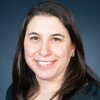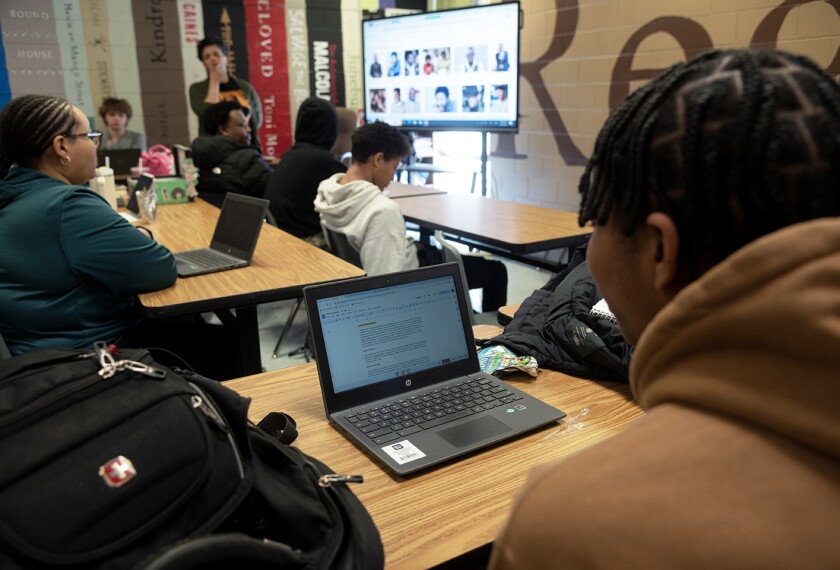Seventeen school districts this summer are embarking on a new approach to reducing chronic absenteeism: enlisting the help of students, parents, and other community members in crafting an absence-fighting strategy, with the hope that all the input will yield effective results.
The idea is that the people closest to the problem—students and their families—will both be able to offer important insights into the unique barriers that keep students in their communities from attending class, and help the community feel a sense of ownership over the issue so it’s not strictly a school district problem, said Baron Davis, a senior adviser for Digital Promise, the education nonprofit overseeing the cohort of districts working on this strategy.
“If I give you something and tell you it’s a problem and here’s how I think we should fix it, you have no ownership in that problem, and you don’t have the same level of urgency to solve the problem,” said Davis, the former superintendent in Richland, S.C. “But when we co-create and co-design the solution to the problem, I have now given you agency and ownership of the issue, and gotten more people invested in the solution.”
More than 1 in 4 students nationwide were chronically absent—missing at least 10 percent of school days—during the 2021-22 and 2022-23 school years, according to an analysis of federal data conducted by the Everyone Graduates Center at Johns Hopkins University and Attendance Works. Those figures represented a marked increase over pre-pandemic levels.
Chronic absences have profound impacts on students who miss classes, hurting their grades, connectedness to their peers and school community, and chances of completing high school. When chronic absences reach high levels, the churn makes it harder for teachers to set classroom norms and teach, and harder for students to learn even when they do show up every day.
The 17 districts from 10 states make up the new cohort, which is an initiative of the Center for Inclusive Education within Digital Promise. They hope to address absenteeism at its roots, Davis said.
The districts involved range in size from 1,500 students to more than 45,000 with percentages of students in free and reduced-price meal programs ranging from less than 10 percent to more than 60 percent. Not all districts have an alarmingly high absenteeism rate, but many do. The districts’ chronic absenteeism rates vary from 10 percent on the low end to up to about 45 percent, Davis said.
“The issue of absenteeism is really well suited for finding strategies and solutions through the lens of collaborations between schools, parents, and students” because it can be such a complex problem that is different from student to student, Davis said.
Each district involved will spend the next six months in an “intensive engagement process,” said Kimberly Smith, chief inclusive innovation officer at Digital Promise. The process will include workshops with other participating district leaders, community forums, and small group activities with families from various backgrounds to solicit feedback.
By the end of 2024, each district will develop a blueprint for addressing absenteeism with ideas generated during the engagement process. The hope is that some initiatives will be short-term and schools will be able to implement them at the start of the second semester. Some will be longer-term initiatives, Smith said.
Districts will be asked to keep close tabs on their chronic absenteeism rates between the first and second semesters to determine whether any changes they make have the desired impact so they can adjust for the next school year if needed, Smith said
The participating districts’ superintendents, or other high-ranking officials in district central offices, will lead the work, Smith said. Principals will also play a key role.
Each district participating in the cohort volunteered to do so, and Davis hopes there will be additional cohorts in the future.
The 17 districts in the inaugural group will receive support and guidance from their peers and staff at the Center for Inclusive Education, including feedback on the blueprints they develop and expert input on implementing new initiatives.
There are some research-backed approaches to combating chronic absenteeism—like ensuring students have reliable transportation to school and that they feel a sense of belonging once they get there. But the inclusive innovation model allows districts to tailor those best practices to fit their communities’ desires and needs.
“What we see in inclusive innovation is that the solutions that come out are things that are really wholly reflective of the folks that are at the table,” Smith said.
At the end of the program, Davis hopes district leaders take the skills they learn about inclusive innovation and apply them to other complex and persistent challenges they face.
“When they move on from chronic absenteeism, and they are faced with the next challenge, I hope and believe they’ll remember to use the inclusive innovation process in helping to solve that problem as well,” he said. “We want it to become culturally ingrained in the educational ecosystem.”
The 17 participating districts are:
- Adams 12 Five Star Schools (Colorado)
- Allentown School District (Pennsylvania)
- East Irondequoit Central School District (New York)
- El Segundo Unified School District (California)
- Elizabeth Forward School District (Pennsylvania)
- Hudson City School District (New York)
- Lynwood Unified School District (California)
- Mount Vernon School District (New York)
- Mountain View Whisman Schools (California)
- NOLA Public Schools (Louisiana)
- Richland School District Two (South Carolina)
- Roselle Public Schools (New Jersey)
- Spokane Public Schools (Washington)
- Springfield City Public Schools (Ohio)
- Suffern Central School District (New York)
- Wilmington Learning Collaborative (Delaware)
- Greenfield Union School District (California)
Disclaimer: The copyright of this article belongs to the original author. Reposting this article is solely for the purpose of information dissemination and does not constitute any investment advice. If there is any infringement, please contact us immediately. We will make corrections or deletions as necessary. Thank you.







